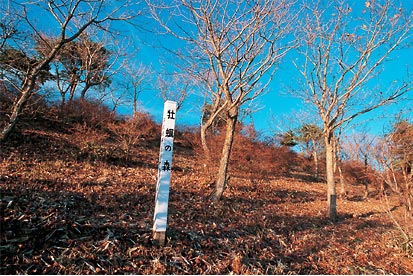|
NIPPONIA No.24 March 15, 2003
|
|
Special Feature*
Tree Lovers
The environment is deteriorating and forests are shrinking. For some people, this is such a concern they have decided to help make the Earth a greener planet again. These pages look at a few of the things being done for the environment in Japan and other countries.
Written by Torikai Shin-ichi and Fukushima Emi
Photos by Takeda Norihisa and Kono Toshihiko
Other photo credits: Rainforest Foundation Japan; The Green Earth Network
The sea needs forests
Hatakeyama Shigeatsu,
Coordinator of the Oyster Forest Care Association
"The ocean and forests are linked by rivers. We have to think of a river basin and the neighboring sea as part of a single ecosystem."
Hatakeyama Shigeatsu cultivates oysters in Kesennuma Bay, Miyagi Prefecture. During a visit to France in 1984, he realized that he had to take a closer look at the relationship between the sea and forests.
Near the mouth of the Loire in western France, he was astounded by the excellent condition of the oysters being cultivated there. Something else caught his eye as well — the saltwater pools in the mud flats were teeming with small fish and other tiny creatures. "The conditions there were like the mud flats in my own prefecture in Japan years ago, when I was a kid."
He then set out to examine different parts of the Loire river basin. He saw a number of deep forests in the upper reaches of the river, and a dozen or more branches of the Loire flowing from there. "That made me think, maybe the forests and streams are important in making the sea a rich habitat for different creatures."
Once back in Japan, he decided he should plant trees on Mount Murone, the source of the Okawa River that flows into Kesennuma Bay. He encouraged other aquaculturists to band together to plant trees on the mountain, as a way of keeping their oyster farms healthy. The actual planting began in 1989.
They also asked Hokkaido University to study conditions in the bay. From this they learned that well over half of the nutrients needed by living creatures in the bay flowed down with the river water, like tiny treasures from the forest.
They have already planted about 50 species of deciduous broadleaves like beeches and mizunara oaks — 30,000 trees in all. They have also organized events and invited children and their parents who live on the mountain to participate, in order to learn about the sea through personal experience.
Hatakeyama explains, "By planting trees in the mountains, where the river begins, we are also planting the idea of environmental conservation in the minds of people living in the river basin. If we don't do both, we won't succeed at either."
As he says, interaction between people in the highlands and others on the coast has made both sides realize they need to work together to protect the forest and the river environment. The Okawa River now has the clearest water of all rivers in the prefecture, and the marine life in Kesennuma Bay is healthy and varied.
 |
 |
|
Left: Hatakeyama Shigeatsu with a sample of his cultivated oysters. They feed on nutrients suspended in the seawater. Nutrients from forest streams give them a firmer flesh and juicier taste.
Right: This place is called Kaki no Mori (Oyster Forest). The trees were planted in 1989 at an elevation of about 700 m on Mount Murone (summit, 895 m above sea level).
|
|